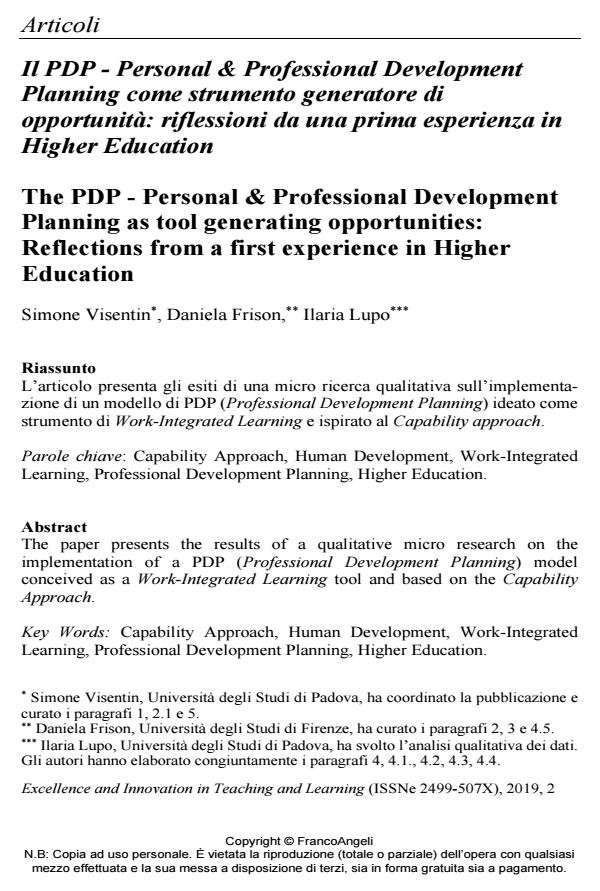The PDP - Personal & Professional Development Planning as tool generating opportunities: Reflections from a first experience in Higher Education
Journal title EXCELLENCE AND INNOVATION IN LEARNING AND TEACHING
Author/s Simone Visentin, Daniela Frison, Ilaria Lupo
Publishing Year 2019 Issue 2019/2
Language Italian Pages 17 P. 75-91 File size 330 KB
DOI 10.3280/EXI2019-002005
DOI is like a bar code for intellectual property: to have more infomation
click here
Below, you can see the article first page
If you want to buy this article in PDF format, you can do it, following the instructions to buy download credits

FrancoAngeli is member of Publishers International Linking Association, Inc (PILA), a not-for-profit association which run the CrossRef service enabling links to and from online scholarly content.
The paper presents the results of a qualitative micro research on the implementation of a PDP (Professional Development Planning) model conceived as a Work-Integrated Learning tool and based on the Capability Approach.
Keywords: Capability Approach, Human Development, Work-Integrated Learning, Professional Development Planning, Higher Education.
Simone Visentin, Daniela Frison, Ilaria Lupo, Il PDP - Personal & Professional Development Planning come strumento generatore di opportunità: riflessioni da una prima esperienza in Higher Education in "EXCELLENCE AND INNOVATION IN LEARNING AND TEACHING" 2/2019, pp 75-91, DOI: 10.3280/EXI2019-002005